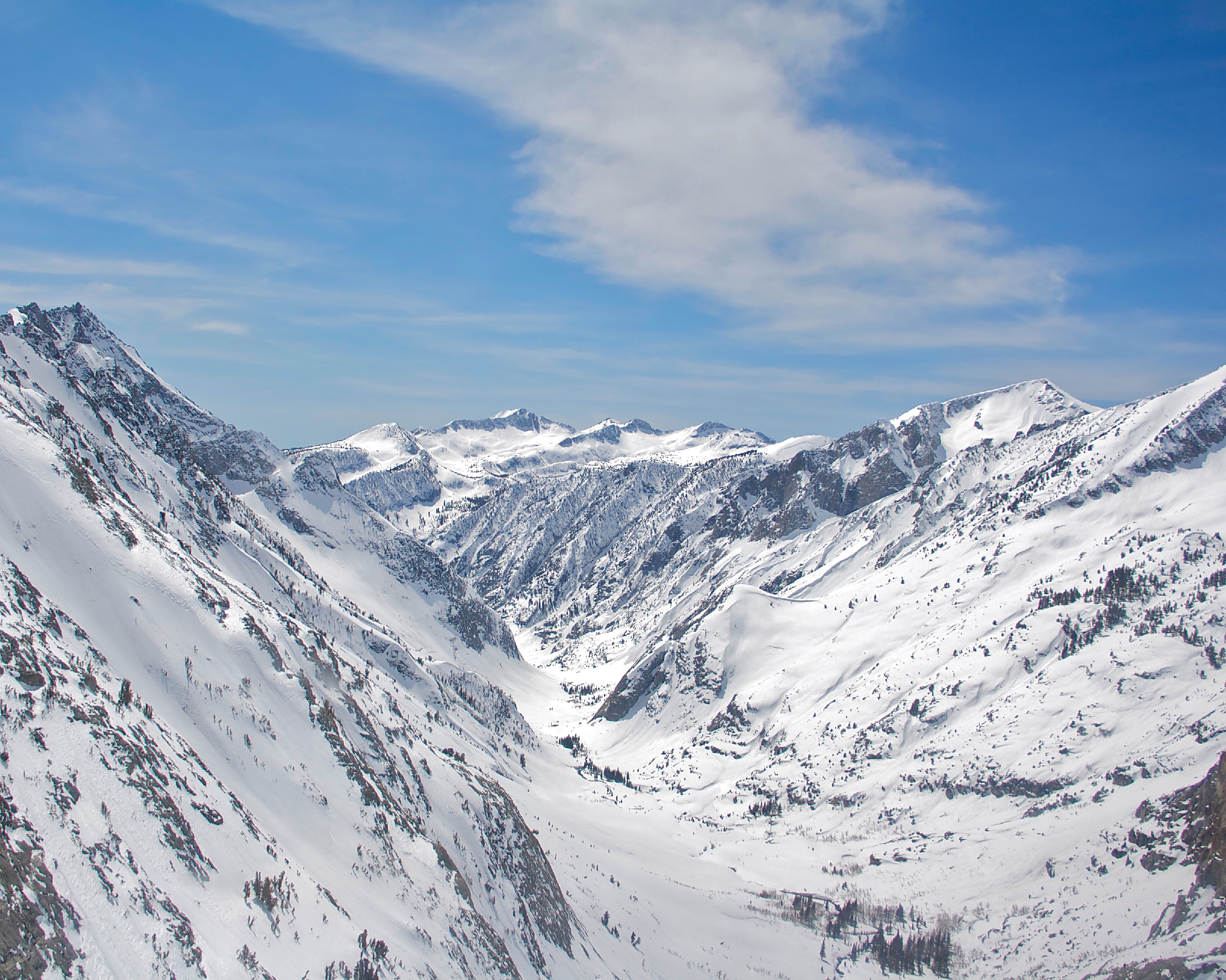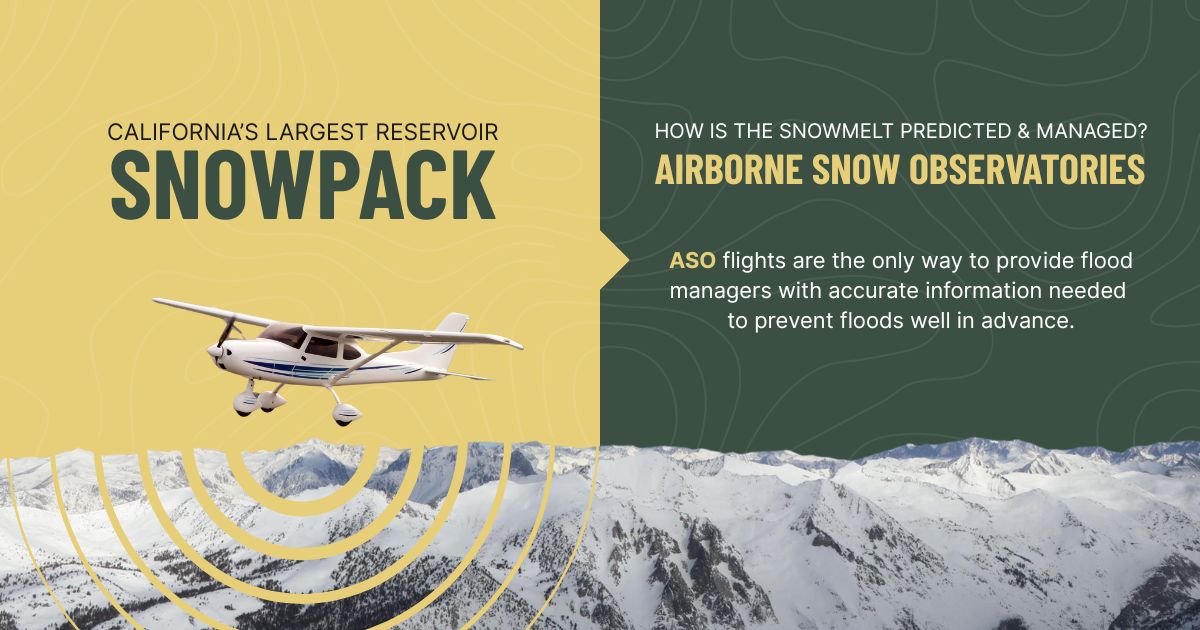Our region’s water security begins high in the mountains. Snowpack acts as the state’s largest natural reservoir, melting each year to provide the water that sustains our farms, cities, ecosystems, and hydropower generation. To achieve the most accurate forecasting of how much water is stored in the snow, where it is, and when it will melt, we use Airborne Snow Observatory (ASO) flights.
Why California Needs Airborne Snow Observatory (ASO) Flights
ASO flights use advanced LiDAR and imaging technology to provide real-time insights to manage flood risk, optimize water supply, support hydropower production, and maintain the river flows for fish and wildlife.
Despite its clear benefits, funding for ASO flights has been reduced in the state’s proposed FY 2026 budget—from a needed $35 million down to just $4 million. Without stable investment, California risks losing one of its most effective climate adaptation and water management tools.
To learn more about this issue and what’s being done about this vital program, explore the full letter submitted to state leadership and the collaborative Kings River Water Association/Kings River Conservation District in-depth blog post on the Water Blueprint for the San Joaquin Valley’s website below:

ASO at KRCD
The Kings River watershed in the Southern Sierra Nevada is where, on average, 1.7 million acre-feet of water supply for portions of Fresno, Kings, and Tulare counties is found stored as snow. The supply is extremely variable. In wet years it can exceed 4 million acre-feet, causing potential flood risk downstream, and can swing below 400,000 acre-feet in the driest years, straining groundwater supply used to meet demand. Water management begins with understanding and forecasting snowpack, and to do that requires Airborne Snow Observatories:
- In 2019, ASO detected unexpected snowpack levels, enabling swift response that avoided over $100 million in flood-related water losses.
- In 2023, ASO data helped avoid billions in potential flood damage during one of the snowiest years on record.


